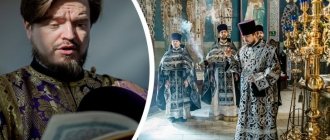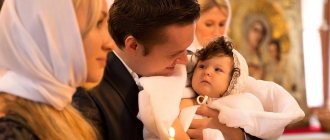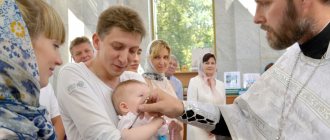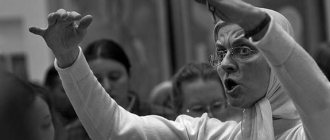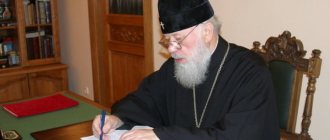For some people, serving God is the main goal in life. They are happy to give their all in order to achieve deep spirituality. It is these people who most often ask the question: “How to become a priest?” Indeed, thanks to this profession, a person can not only get closer to the Almighty, but also help others see his light.
So, let's take a closer look at how one becomes a priest. What skills are needed for this? Who can apply for this rank? And why do only a few remain faithful to God until the end of their lives?
Priesthood as a special life path
The priesthood is not just a profession. This is one of the most important decisions in life. This path is not suitable for many. After all, the future priest must have certain qualities and special knowledge. The question of how to become a priest is by no means an idle one. There must be an inclination to accept rank, spiritual properties, responsibility and a certain personal maturity. Because, as Hieromonk Dionysius Ignat (1909-2004) said,
“Priests and even more bishops should be like the sun - that’s how they should shine for simple believers. The priest is the apostle of the nation, he must defend the faith and the people.”
Orthodox priest
Believers often have questions regarding the ministry of the church. For example, at what age can one become a priest? What does it take to become a priest?
In order to find answers to these questions, you need to know what the priesthood is in Orthodoxy.
Priesthood in Orthodoxy
The priesthood in Orthodoxy means the special dedication of a Christian to serve God and the Church. At the same time, he receives the grace of the Holy Spirit and the right to perform church Sacraments and rituals. This is a special calling that not all believers have.
“The Lord gives a certain talent to every person. Someone becomes a teacher, someone a doctor, someone a priest or a monk. But, one way or another, a person makes a conscious choice, a choice according to vocation and love” (Hegumen John Foschii).
The rite of ordination to the rank of clergy belongs to one of the seven church sacraments. In Greek it is called consecration, that is, “ordination.” This name is due to the fact that during its execution the bishop lays his hands on the head of the person being ordained as a priest. This is how we receive God's grace to perform the sacraments and spiritual guidance of the entrusted flock.
According to Orthodox Teaching, apostolic succession is preserved through an unbroken chain of ordinations, going back to the Apostles of the Savior. This is how the transfer of grace-filled gifts occurs, including the gift of the priesthood.
To become a priest, you need to go through all the degrees of the priesthood sequentially. From reader and subdeacon to deacon, and then to be ordained priest. Bishops are appointed by monastics who have the title of archimandrite.
Degrees of the priesthood
In the Orthodox Church there are three degrees of priesthood: deacons, priests (priests), bishops (bishops).
Deacon means “servant” in Greek. This is a clergyman of the first (junior) degree. He co-serves with priests and bishops during the celebration of the Sacraments and other sacred rites. However, the deacon does not perform any divine services on his own. The senior deacon is called protodeacon.
The second degree of priesthood is priest. He can perform all the Sacraments except the Sacrament of Ordination. Priests are ordained only after ordination to the diaconate. The priest is not only the performer of sacred rites, but also a shepherd, spiritual leader and teacher for his parishioners. He preaches, teaches and instructs his flock.
Bishop is the third, highest degree of priesthood. The bishop can perform all the Sacraments and sacred rites. Bishops are also called bishops. Bishops have their own degrees. Senior bishops are called archbishops, followed by metropolitans. The most senior bishop is the head, the primate of the Church, who has the title of patriarch.
It should be noted that in the Russian Orthodox Church there are white and black clergy. The white clergy includes priests who have married. To black - inhabitants of monasteries who have taken a vow of celibacy.
The right to perform the Sacrament of Priesthood belongs only to the bishop. All other church Sacraments (Confession, Communion, Baptism, Confirmation, Unction, Wedding) can be performed by priests.
“It’s dangerous to take on all types of help at the same time.”
Metropolitan Longin (Korchagin).
Photo from wikipedia.org Metropolitan Longin (Korchagin) , Saratov:
– A priest is, first of all, a performer of divine services and sacraments, a person who preaches the word of God to people.
Therefore, in first place I would put the celebration of the Liturgy as often as possible.
As for confession, I am convinced that during confession the deepest and most fruitful communication between the priest and parishioners occurs.
Otherwise, priests are very different people. Everyone has different gifts and abilities. Therefore, someone can provide for the homeless - and if he succeeds, my task as a bishop is to help him with this. Lectures, sermons, scientific, teaching activities - it all depends on how capable the priest is of this.
Just don’t grab onto many different things: a person who does everything at once, as a rule, is shallow in his activities.
It is better to limit yourself somehow, and, in addition to the obligatory services, confession, and sermon, you need to take on one or at most two areas of work.
The ministry of the priest
What is the ministry of a priest? Some of the priests strive to serve the Liturgy daily. Another takes care of addicts and homeless people. The third puts his energy into a lengthy confession and spends all his time communicating with parishioners. Someone is involved in scientific or teaching activities, and so on. But first of all, the ministry of a priest consists of prayer.
“The time that a priest devotes to prayer is a time of gain, not loss. Time to acquire for everything else. Everyone must serve with their gift. Someone succeeds in teaching, he is a teacher from God - great, let him be, as they said before the revolution, a teacher of the law and engaged in educational activities. If someone has such a merciful heart that he himself reaches out to help those in need, let him engage in social service.
If the priest was a former athlete, and then organized a children’s sports section somewhere in the village and thus attracted children to the Church, great! Each person has his own gift. And it is through this gift that priests must attract people to the main thing - to the Eucharist, to the Feast of Faith" (Archbishop Ambrose Ermakov).
Final stage of verification
It should be understood that successfully passing the exams does not guarantee admission to the theological seminary. After all, after an official knowledge test, all applicants undergo a final interview. Here, senior clergy determine the sincerity of the students' motives and their suitability for the role. And if one of the mentors decides that their ward is disingenuous with his heart, he will be immediately sent home.
How to become a priest in the Orthodox Church: requirements for candidates
To accept the priesthood means to dedicate your entire life to the Church. As a sign of the inseparability of life into private and church, the wedding ring of the person being ordained as a priest is removed and placed on the holy altar in the altar.
How to become a priest without studying at a seminary? According to the “Regulations on the procedure for approving the ordination of persons to the priesthood” of December 27, 2016, persons who do not have a higher spiritual education can also be ordained. To do this, they must meet certain requirements of the Church Canon.
The modern Charter of the Russian Orthodox Church determines the permissible age for candidates for the priesthood. For deacons and priests - upon reaching the age of majority, for bishops - over 30 years of age. Both a monastic and a married Christian can become a priest. Moreover, he should be married only once (Apostolic Canon, 17). Only a monk is ordained to the rank of bishop in the Russian Orthodox Church.
There are special requirements for the wife of a protege (a candidate for priesthood). She must profess the Orthodox faith and be married for the first time. The priest's wife should set an example for the parishioners with her chastity, calmness and churchliness.
Righteous John of Kronstadt (1829-1908) spoke about the high rank of being a priest:
“The priest, as a doctor of souls, must himself be free from mental illnesses, that is, from passions, in order to heal others. As a shepherd, he himself must be shepherded in green pastures, evangelical and patristic. To know where to graze the verbal sheep. You yourself must be skilled in fighting mental wolves in order to be able to drive them away from the flock of Christ. Must be skilled and strong in prayer and abstinence. Should not be bound by worldly lusts and pleasures, especially covetousness, love of fame, and pride. In a word, he must himself be light in order to enlighten others, spiritual salt in order to protect others from spiritual corruption, and he himself must be free from the corruption of passions.
Otherwise, anyone who is spiritually sick can say to him: You hypocrite, remove the first log from your side, and then see clearly and take away the speck from my side (Matthew 7:5).”
Strength of spirit
Even at the seminary stage, young men and women are prepared for ministry. It is important that a candidate for the post of clergy understands all its versatility. A priest is a shepherd, the head of a parish, an example for the laity, an assistant in all matters. People come to him for advice not only on the word of God, but also on personal matters, with complaints about loved ones, with health problems, with personal fears and passions.
Rospotrebnadzor assessed the possibility of re-vaccination with Sputnik V
For both indoors and outdoors: simple but stylish hairstyles for long hair
Scientists have created an interactive "map of undiscovered life": 80% remains to be found
In addition to serving people, the priest does a lot in the church: he conducts prayer services, funeral services, weddings, baptisms, confesses, conducts liturgies and Sunday services, conducts educational activities, often priests are invited to schools and other educational institutions to talk about the service and introduce young people to the faith. A person who wants to connect his life with faith and church must have a strong spirit, inexhaustible love for his neighbors, a strong inner core to fight weaknesses and temptations.
Who can't be a priest
Obstacles to accepting the priesthood are renunciation of Christ or acceptance of baptism under the pressure of external circumstances, and not by faith (Rule of the Neocaesarea Council, 12). For example, if baptism was accepted during illness for fear of death. Candidates who do not have knowledge of the Orthodox faith cannot become priests. Christians who have previously committed grave sins are not ordained priests. These include murder, theft, sacrilege, fornication, etc.
According to the Church Canons, it is prohibited to perform the rite of ordination on a Christian if, after baptism, he married more than once or had extramarital affairs. The reason for refusing a protege to accept the priesthood may also be duties to the state. Thus, a clergyman cannot combine his ministry with work in government or administrative bodies. The same goes for military service.
According to the Project “Professions Compatible and Incompatible with the Priesthood” of 2022, priests are prohibited from professional participation in the activities of state courts, the prosecutor’s office, in institutions conducting investigations and inquiries, and in any law enforcement institutions. As well as service in municipal authorities. It is prohibited to engage in your own business, especially banking, credit, and insurance. It is unacceptable to be employed in establishments that are morally questionable, for example, gambling houses, casinos, bars. It is forbidden for priests to engage in professional sports, as well as the activities of actors, dancers, and singers. You cannot engage in medical or veterinary activities that involve shedding blood.
It should be noted that some exceptions may be allowed due to the outstanding qualities of the candidate. The fulfillment of two conditions is absolutely mandatory in Orthodoxy. The clergyman must be a member of the Orthodox Church and a man.
The approval of a candidate for the rank of deacon and priest is made by the diocesan bishop and the diocesan council.
Believing man over 18
To begin the path of serving the Lord in the ranks of the clergy, you must have many knowledge and skills. They look closely at the candidate, because the main indicator is the depth of church life, the strength of faith and spirit. Also, the candidate must not be burdened with loans, work in the civil service, have no criminal record and no remarriage.
The first stage is studying at the seminary. Only men between 18 and 35 years old are allowed. The entrance exams are serious: knowing by heart many prayers, history and the Bible, and the ability to read Old Church Slavonic. But this is not enough. A person with serious physical problems, without a leg, without an arm or fingers on his right hand will not be accepted into the seminary - without this he will not be able to perform rituals. However, studying in a seminary is not necessary: if a man meets the canons of the church, then he can be admitted to the priesthood.
We make effective fertilizing for seedlings: waste is put to use
Astral projection: truth or myth? Mediums explain the phenomenon of leaving the body
How to understand that the soul is tired, not the body. Vacation plan for the soul
How to become a priest: sequence of actions
How to become a priest in Russia? Anyone wishing to be ordained must submit a special petition to the bishop of the diocese. A number of documents are attached to this petition. This is a recommendation from a confessor and dean, an autobiography of the applicant. Also attached are baptism and wedding certificates (if married), certificates of education and place of residence. In addition, a medical certificate in form No. 286, certificates from psychoneurological, dermatovenerological, and tuberculosis dispensaries are required. Attached are copies of all pages of the passport (if there is a wife, her passport), a copy of the marriage certificate.
For a monastic, you must provide a certificate of tonsure. You should also fill out a form.
The decision on ordination is made during the next meeting of the Diocesan Council in the presence of the candidate. During the conversation, the degree of readiness of the candidate to accept holy orders is determined. If the Diocesan Council has approved the candidate for priesthood, then he is sent to confession to the diocesan confessor. Only after this does the bishop make the final decision on ordination. A written survey is carried out for the protege, after which they take the protege oath. There is a kissing of the cross and the Gospel. The oath is certified by the signature of the ruling bishop. After this, a date and time for the ceremony of consecration are set.
Ordination
Ordination occurs only during the Liturgy in the presence of all worshipers. Ordination is not performed at the Liturgy of the Presanctified Gifts. The reason is the absence of the Eucharistic Canon on it, which is a prerequisite for a newly ordained priest.
Ordination to the priesthood is accomplished as follows.
At the appointed time of the service, the henchman is taken to the middle of the temple. A deacon or protodeacon (senior deacon) asks the parishioners, the clergy, and the ordaining bishop for consent to his ordination. After obtaining consent, the protege is led into the altar and led around the throne three times. At the same time, the same chants are sung as during the wedding, when the newlyweds are led around the lectern. This symbolizes the conclusion of a special union between the clergy and the Church. The henchman bows his head, which the bishop covers with the edge of his omophorion. This testifies to the performance of the sacrament by God Himself. The bishop lays his hands on top of the omophorion and says a prayer. This is how the invocation of Divine grace occurs on the one being ordained.
Then the newly ordained clergyman is dressed one by one with all the elements of vestments that are appropriate to his rank. This happens when the choir sings, as if on behalf of the whole people. "Axios" is sung, which means "Worthy".
At the end of the rite of ordination, each priest is given a so-called ordination letter. It constitutes a certificate confirming the validity of the ordination. The newly appointed person also receives a decree indicating the place of his ministry. The document names a specific temple or monastery for further service. In addition, the clergyman receives a special certificate.
